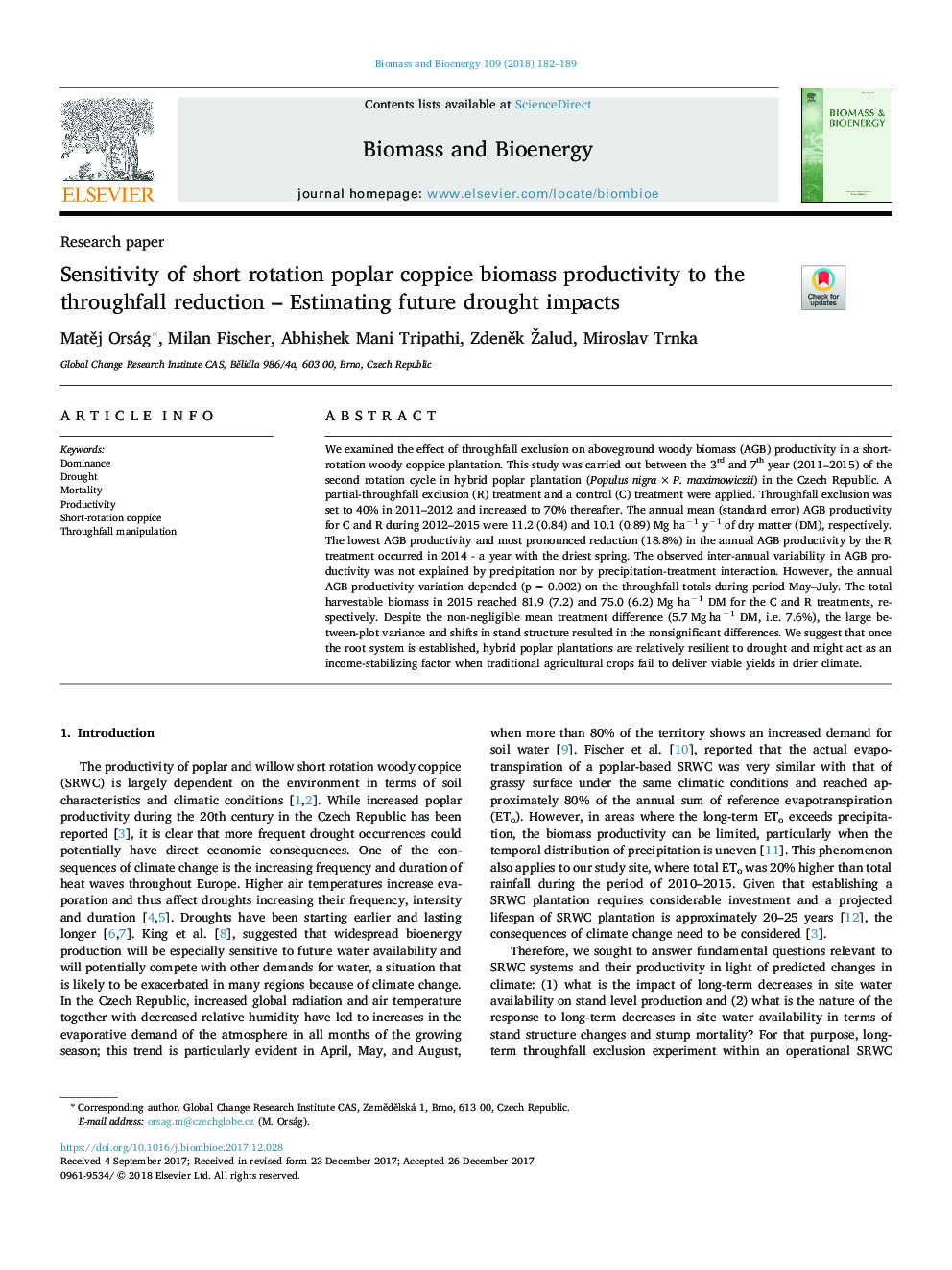| Article ID | Journal | Published Year | Pages | File Type |
|---|---|---|---|---|
| 7063027 | Biomass and Bioenergy | 2018 | 8 Pages |
Abstract
We examined the effect of throughfall exclusion on aboveground woody biomass (AGB) productivity in a short-rotation woody coppice plantation. This study was carried out between the 3rd and 7th year (2011-2015) of the second rotation cycle in hybrid poplar plantation (Populus nigraâ¯Ãâ¯P. maximowiczii) in the Czech Republic. A partial-throughfall exclusion (R) treatment and a control (C) treatment were applied. Throughfall exclusion was set to 40% in 2011-2012 and increased to 70% thereafter. The annual mean (standard error) AGB productivity for C and R during 2012-2015 were 11.2 (0.84) and 10.1 (0.89) Mg haâ1 yâ1 of dry matter (DM), respectively. The lowest AGB productivity and most pronounced reduction (18.8%) in the annual AGB productivity by the R treatment occurred in 2014 - a year with the driest spring. The observed inter-annual variability in AGB productivity was not explained by precipitation nor by precipitation-treatment interaction. However, the annual AGB productivity variation depended (pâ¯=â¯0.002) on the throughfall totals during period May-July. The total harvestable biomass in 2015 reached 81.9 (7.2) and 75.0 (6.2) Mg haâ1 DM for the C and R treatments, respectively. Despite the non-negligible mean treatment difference (5.7â¯Mgâ¯haâ1 DM, i.e. 7.6%), the large between-plot variance and shifts in stand structure resulted in the nonsignificant differences. We suggest that once the root system is established, hybrid poplar plantations are relatively resilient to drought and might act as an income-stabilizing factor when traditional agricultural crops fail to deliver viable yields in drier climate.
Related Topics
Physical Sciences and Engineering
Chemical Engineering
Process Chemistry and Technology
Authors
MatÄj Orság, Milan Fischer, Abhishek Mani Tripathi, ZdenÄk Žalud, Miroslav Trnka,
